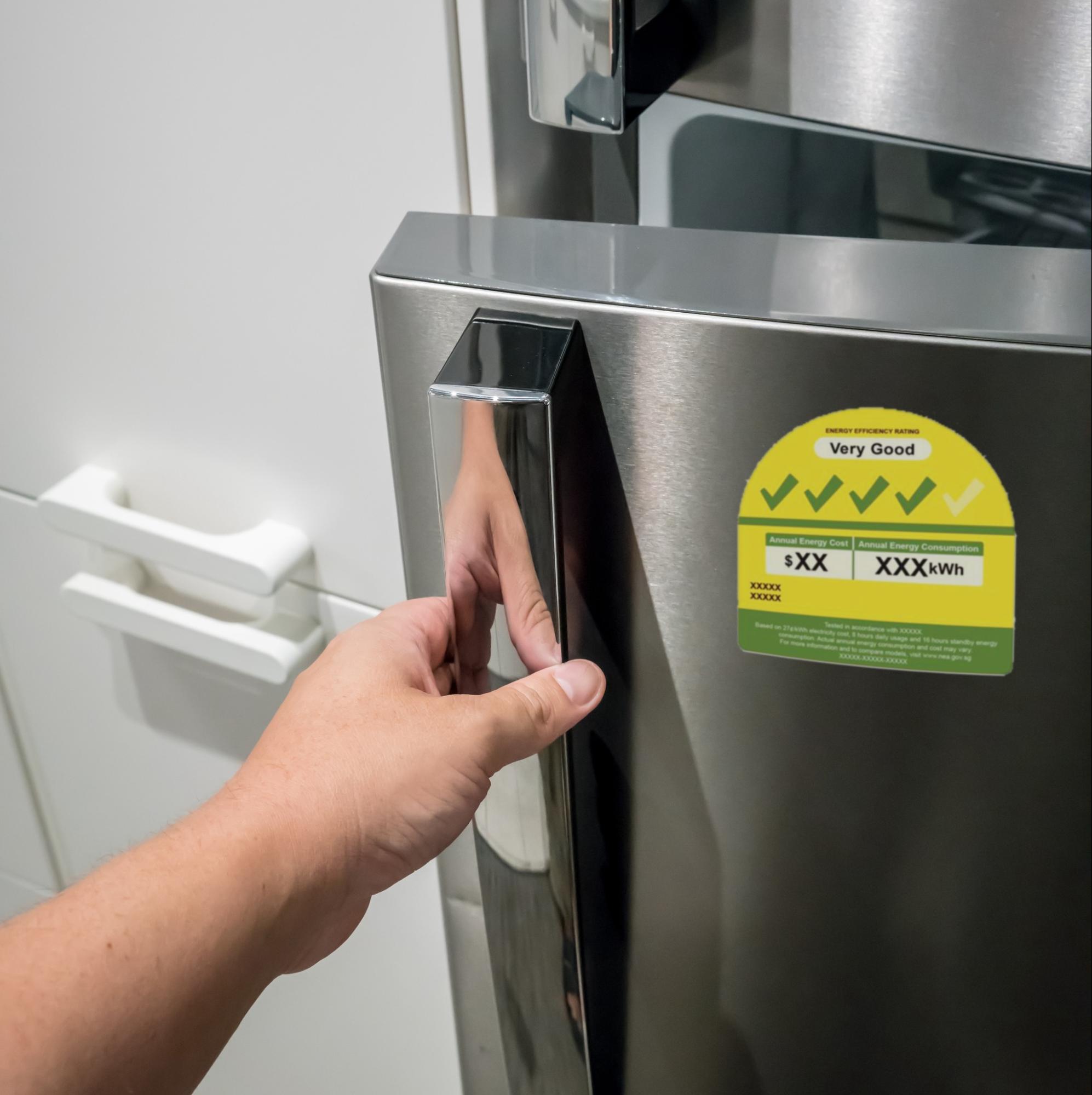Going green at home doesn’t have to be troublesome or complicated
While you probably bring reusable bags to the supermarket or your own container when you dabao food because you refuse to pay an extra few cents, admit it: it also feels nice to do something environmentally friendly by saying no to disposable carriers and cartons.
However, when it comes to adopting greener habits at home, you might be wondering what more you can do to be kinder to Mother Earth.
Something that may come to mind immediately is recycling. This is relatively convenient and fuss-free in Singapore — simply sort your trash and take the clean recyclables to a blue bin, which is available in most estates.
But what else is there? Read on for some ideas that, like recycling, are a lot simpler than you might expect.
1. Find reusable alternatives for single-use household items
According to a report by the Singapore Environment Council, the population goes through at least 1.76 billion plastic items every year. This includes 820 million supermarket plastic bags and 473 million other plastic disposable items. Yikes.
Fortunately, you can find reusable alternatives for just about anything these days. For example, instead of going through rolls of Ziploc bags or cling wrap to store food, try a beeswax wrap instead.

Source: Katecat on Canva
These washable pieces of coated cloth can be easily shaped around the item you’re wrapping and then sealed with the warmth of your hands. They also usually come in lots of fun colours and designs, which is a delightful bonus.
There are also stainless steel coffee filters to replace paper ones for those who need their caffeine fix in the morning, silicone baking cups and mats to replace paper liners, and even washable menstrual pads for that time of the month.
The list goes on, so whenever you’re about to stock up on something, just Google to see if you can get your hands on a reusable alternative. The effort will be worth it for the planet.
2. Fill your home with plants
Well, this is one way to literally go green in your house.
Besides the fact that there’s nothing more relaxing and mood-lifting than stepping into a space that’s been beautified by lush foliage, some types of houseplants can be good for you and the environment because they can remove pollutants and gases, purifying the air and potentially reducing your carbon footprint.
Some species that are renowned for this ability include the Snake Plant, which absorbs harsh chemicals while also producing oxygen. Aloe Vera and Spider Plants can also reduce or remove harsh chemicals — including those commonly found in cleaning products — by absorbing them, so those would be useful to have around, too.

Source: Tanya Paton from Getty Images on Canva
Fret not if you don’t have the greenest of thumbs, because the three that we mentioned above — along with countless others — are known to be very low-maintenance and easy to care for.
3. Use energy- and water-efficient appliances
Living in a first-world nation like Singapore, it can be easy to become complacent about our water and electricity use because both are so readily available anytime, anywhere.
Since using them frequently is kind of inevitable (hey, we still have to take proper showers and turn on the lights at night), one way to lessen your carbon footprint is by choosing energy- and water-efficient appliances.
The Government is here to help with that. Earlier this month, NEA and PUB, Singapore’s national water agency, announced that all HDB households will get S$300 worth of climate vouchers from 15 April.
Recipients may use these vouchers to purchase different types of household appliances that are above a certain energy efficiency rating, which is indicated by the number of ticks on the energy label.

Source: Grace Fu on Facebook
Switching to these items can help you do your part in slowing down climate change by reducing your energy and water consumption at home, resulting in decreased greenhouse gas emissions.
As a bonus, you’ll be greeted with lower utility bills in the mail. It’s a win-win situation.
4. Turn off main switches when not in use
While having energy-efficient LED bulbs is great, you can also resort to the old-fashioned way of remembering to turn off all main switches when they’re not in use, whether it’s before leaving the house for a week-long holiday or turning in for the night.
There’s even an entire global movement dedicated to turning off the lights, at least for 60 minutes — Earth Hour, where participants go dark in a symbolic show of support for the planet. The most recent event just took place last Saturday (23 March) from 8.30pm to 9.30pm.

Source: manfeiyang from Getty Images on Canva
Turning off main switches entirely, however, can have a stronger impact.
When you leave them on unnecessarily, you’re not just wasting electricity or risking a shocking utility bill. You might be actively contributing to environmental degradation by squandering the precious resources — such as coal or natural gas — that go into producing electricity.
This is because of ‘vampire energy’, also known as ‘phantom power’ or ‘idle load electricity’. Appliances like microwave ovens and televisions can take up large amounts of power even when not in use, making up as much as 10% of your electricity bill.
For example, leaving the water heater on can cost an extra S$110 a year. Let that sink in.
5. Opt for a green add-on to your electricity plan
Short of going off the grid completely, this is one of the best ways to ensure that your electricity use has a gentler impact on the earth.
Geneco is the first and only electricity provider in Singapore that offers a customisable green add-on for its electricity plans, and there are two types to choose from.
The first offers Renewable Energy Certificates (RECs), which are a way of ‘paying it forward’ to support sustainable energy projects, such as solar panel grids and windmill farms.

Source: Nuno Marques on Unsplash
There are also Carbon Credits (CCs), which go towards funding projects that reduce greenhouse gas or carbon emissions.
Both signify beneficial contributions to the environment and can help to lower your carbon footprint. More people purchasing RECs and CCs can also represent a growing demand to live a greener lifestyle.
Geneco giving away first 6 months of free green add-on for electricity plans
If you’re keen to incorporate a green add-on to your electricity plan for your home but aren’t sure where to start, read on.
As we mentioned earlier, Geneco is Singapore’s first and only electricity provider to offer a customisable green add-on for your electricity plan — and it’s easier to get and more affordable than you think.
From just S$1, customers can opt in for Power Eco Add-on, which lets them choose between CCs or RECs as well as their level of green contribution.
With the add-on, you can support the removal or avoidance of up to 4,001kg of carbon dioxide (CO₂) emissions — that’s as much CO₂ as 197 Rain Trees absorb in a year.

Source: Roots
Signing up is a breeze, too, as it only takes five minutes and can be done online.
Now’s the best time to join the club as Geneco is offering its Power Eco Add-on free of charge for the first six months to new customers.
Existing customers who opt into the green add-on or upgrade their existing one via Geneco’s Self-Service Portal or the Geneco mobile app can benefit, too. This offer is available for a limited time only.
Geneco’s electricity plans are also said to have the lowest rates in town — its Get It Fixed 24 plan costs 29.53¢ per kWh, and there are loads of promotions and rebates to zap away any financial worries.
There’s more – MS News readers will receive an additional S$30 bill rebate by keying in the exclusive referral code <MSN30>. Don’t say we bo jio.
For more information on Power Eco Add-on, visit the website here and don’t forget to follow Geneco on Facebook and Instagram.
Being kind to the planet starts at home
The environment has been a big topic of discussion for decades, and more and more companies are doing their part to try and adopt more sustainable practices.
You can do the same at home, too, and it can actually be very effortless and easy.
All you have to do is make the right choices, and while your actions may seem small at first, they can go a very long way in helping to make the earth a better and safer place for all.
This post was brought to you in collaboration with Geneco.
Featured image adapted from Dee Angelo on Canva.

Drop us your email so you won't miss the latest news.










